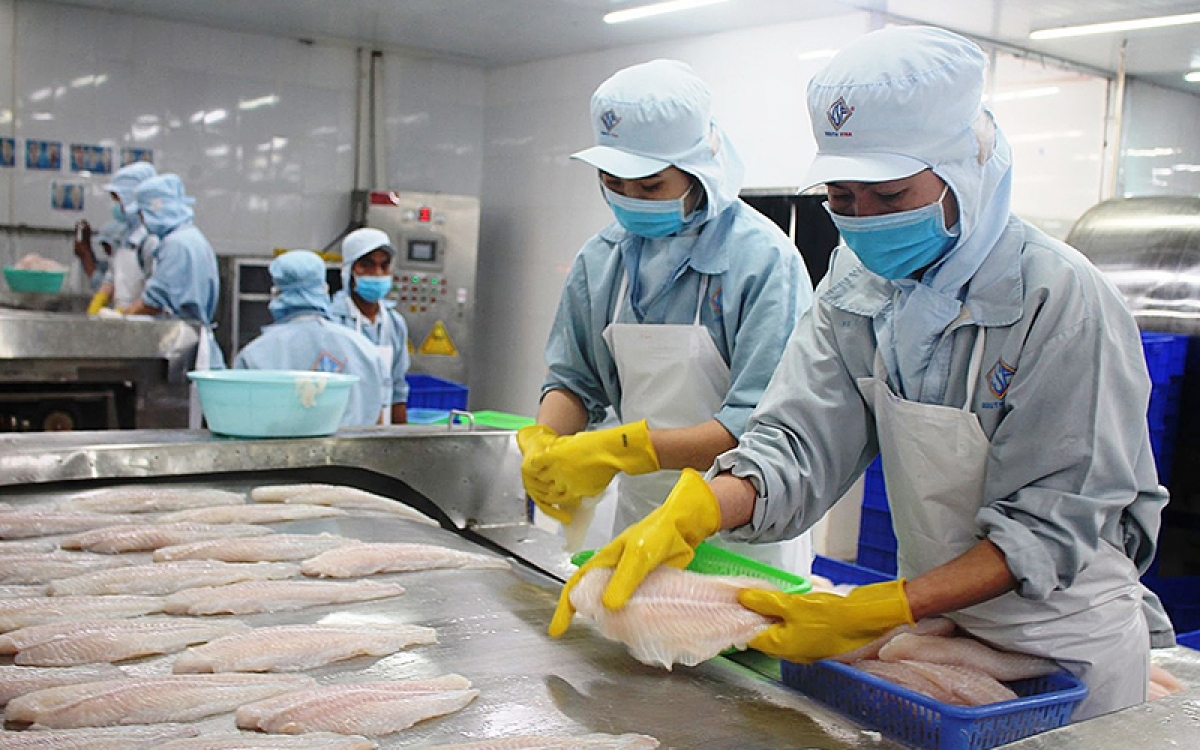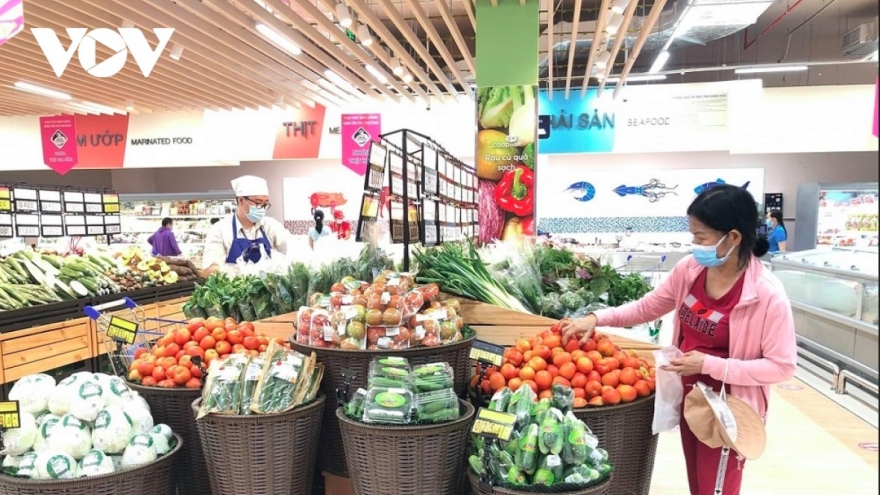Promising signs for aquatic exports amid global uncertainties
VOV.VN - Despite enduring a decline in key seafood exports during the first quarter of the year, there are positive signs ahead for Vietnamese aquatic products in the UK, Japan, Germany, and Israel, according to the Vietnam Association of Seafood Exporters and Producers (VASEP).
Bright prospects for tuna exports
VASEP statistics indicate that seafood export turnover throughout the reviewed period dropped by 27% to about US$1.85 billion on-year. In March alone the export value of key aquatic products such as shrimp, pangasius, tuna, squid, and octopus fell by between 8% and 39%.
The decline recorded in tuna exports can be attributed to global high inflation and changing consumer habits with a focus on cheap products.
Furthermore, the nation has not yet removed the illegal, unreported and unregulated (IUU) fishing yellow card, a factor causing an added obstacle for the country’s tuna industry.
Despite these challenges, tuna exports to such markets as the UK, Japan, Germany, and Israel have witnessed an upward trajectory.
Most notably, tuna exports to the UK in February increased by more than 13 times to reach US$971,000, while the two-month exports saw a three-fold rise to US$1.3 million on-year.
Expert Nguyen Ha assessed that although Vietnamese tuna is facing tough competition from Ecuador and Mauritius, UK importers have increased their tuna imports from the Vietnamese market thanks to advantages of preferential tariffs under the UK-Vietnam Free Trade Agreement (UKVFTA).
Aside from the UK market, tuna exports to Japan, Thailand, Germany, and Israel during the course of the two-month period also increased by between 32% and 99% respectively. These are also countries that are ranked among the top five importers of Vietnamese tuna.
Businesses need to actively grasp market trends
With regard to market trends, Le Hang, communications director of the VASEP, said the global market has been significantly impacted by both high inflation and the economic slowdown, thereby causing a fall in the consumption and import demand.
Seafood exports are anticipated to gradually recover from the second quarter of the year as international expos in the United States and the EU are expected to serve as a platform for Vietnamese businesses to attract more customers
Moreover, Hang pointed out that China will rise to become the largest importer of Vietnamese seafood moving forward, adding that the competitive pressure is huge due to exporters from other countries also targeting this market after its reopening.
Similarly, exports to the EU, Japan, and the Republic of Korea are projected to not make any major breakthroughs as high inflation has made consumers tighten their spending with the average import price also decreasing compared to the previous year.
As a means of dealing with market fluctuations, businesses are required to be more proactive in taking advantage of tax incentives under the terms of various free trade agreements (FTAs) to boost exports.
In fact, thanks to the tariff incentives from the Comprehensive and Progressive Agreement for Trans-Pacific Partnership (CPTPP), seafood exports to Australia have increased remarkably over recent years.
A prime example of this is how white-leg shrimp exports to this market last year skyrocketed by 171% to reach US$259.5 million compared to the figure of US$112 million recorded back in 2018.
Despite the negative impacts caused by global inflation in the first quarter, aquatic exports to the demanding market are expected to recover gradually in the second half of the year, according to industry insiders.



